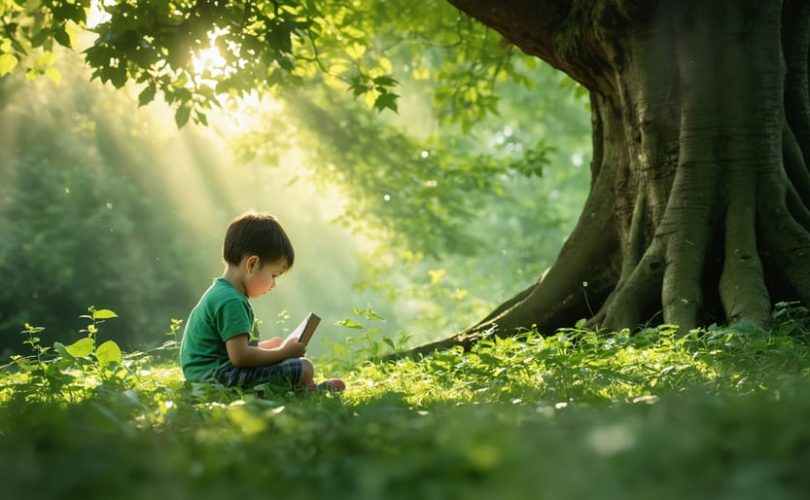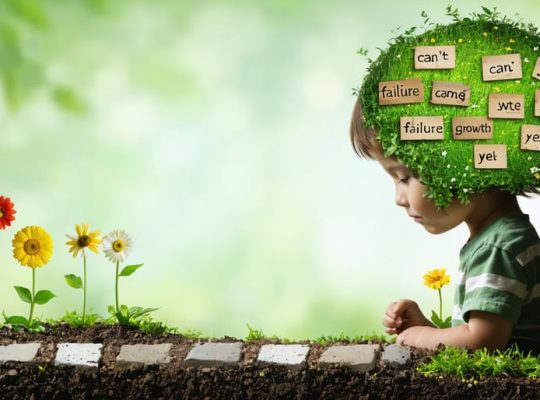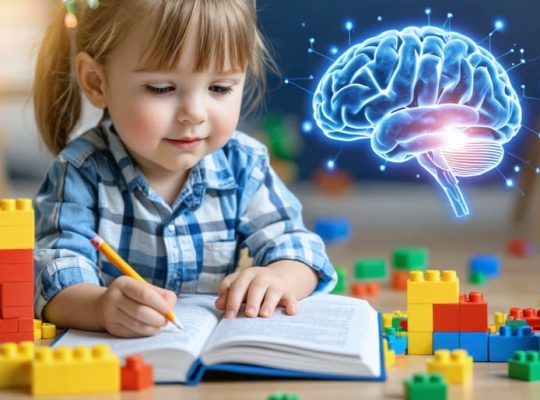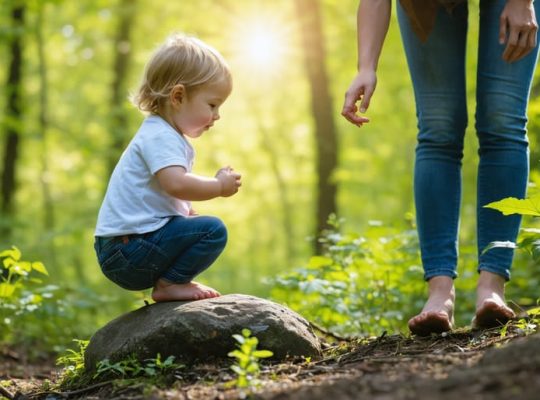When disaster strikes, our children look to us for safety, understanding, and guidance. As parents and caregivers, recognizing the four distinct stages of emotional response can transform how we support our young ones through life’s most challenging moments.
Natural disasters, accidents, or community tragedies affect children differently than adults. While we might focus on practical solutions, our children are processing complex emotions that follow a predictable yet deeply personal pattern. Understanding these stages – shock and denial, anger and fear, depression and grief, and finally, acceptance and hope – enables us to provide the right support at the right time.
Through years of working with families affected by disasters, we’ve discovered that acknowledging these emotional stages isn’t just about healing – it’s about building resilience. When we validate our children’s feelings while guiding them through each stage, we help them develop emotional tools they’ll carry for life.
Let’s explore these four crucial stages and learn how to navigate them together, creating a path toward healing and growth.
Understanding the Four Emotional Stages of Crisis Response
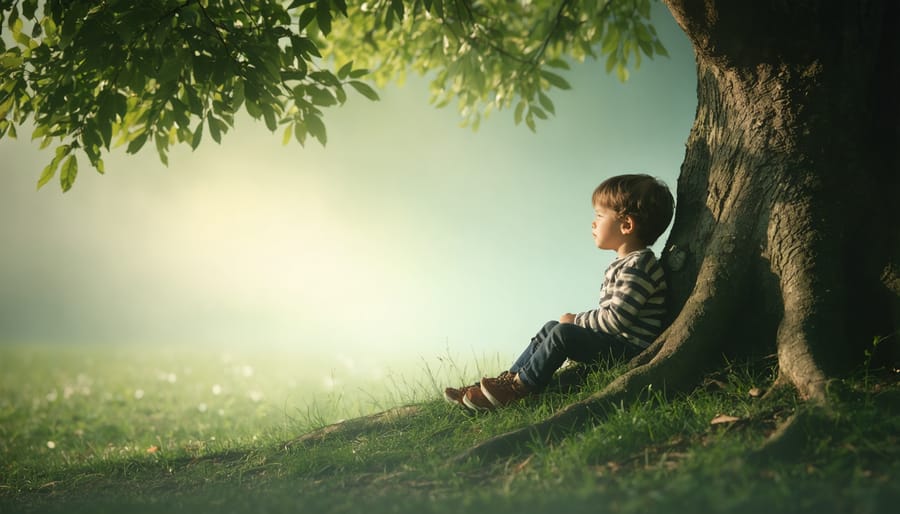
Stage 1: The Initial Impact and Shock
When children first encounter a disaster or crisis, their immediate reactions can be intense and overwhelming as they struggle to process traumatic events. During this initial stage, you might notice your child experiencing physical symptoms like trembling, rapid breathing, or stomach aches. They may also become unusually quiet, clingy, or display outbursts of emotion.
Nature can provide immediate comfort during this shocking phase. The steady presence of trees, the gentle sound of flowing water, or the warmth of sunshine can help ground children when everything else feels chaotic. Dr. Sarah Thompson, a child psychologist, explains, “Natural environments provide a sense of consistency and stability when children’s world feels turned upside down.”
Simple activities like sitting under a favorite tree, watching clouds move across the sky, or listening to birds can help regulate their nervous system. These gentle connections with nature offer children a moment to catch their breath and begin processing what has happened. As one parent shared, “When my daughter was overwhelmed after our house fire, we spent time in our backyard garden. The familiar sights and sounds helped her feel safe again.”
Remember, every child’s reaction is unique, and there’s no “right” way to respond to crisis situations.
Stage 2: Processing and Denial
During this stage, children begin to process what has happened, often showing signs of denial as a natural coping mechanism. You might notice your child saying things like “everything is fine” or acting as if nothing has changed, even when their world has been significantly disrupted.
Outdoor activities can be particularly helpful during this phase, offering gentle ways to acknowledge and process feelings. Consider taking nature walks where you can have quiet conversations about their thoughts and emotions. Simple activities like collecting leaves or stones can give children something tangible to focus on while they process their experiences.
Many children find comfort in creating outdoor art installations using natural materials, which can serve as a safe way to express their feelings without direct confrontation. Building a small rock garden or arranging twigs and flowers can help them maintain a sense of control when everything else feels uncertain.
It’s important to remember that denial isn’t negative – it’s your child’s mind protecting itself while gradually making sense of the situation. Following their lead and providing gentle support through nature-based activities can help them move through this stage at their own pace. Be patient and maintain regular routines when possible, as this provides security during an uncertain time.
Stage 3: Working Through Emotions
During this crucial stage, children begin to process their emotions more deeply and show signs of accepting the new reality. You might notice your child expressing feelings more openly through words, art, or play. This natural progression is both challenging and healing.
Nature-based activities can be particularly effective during this phase. Something as simple as creating a “feelings garden” where children plant different flowers to represent their emotions can provide a tangible way to work through complex feelings. Walking in nature while talking about their experiences, or collecting leaves and rocks to create emotion-themed artwork, helps children express themselves in a non-threatening way.
Dr. Sarah Chen, a child psychologist, shares: “When children engage with nature during emotional processing, they often find it easier to open up. The peaceful environment provides a safe space for difficult conversations.”
Remember that each child moves through this stage at their own pace. Some may take weeks, others months. Watch for signs of progress, such as:
– Increased willingness to discuss the event
– Return to normal sleep patterns
– Better appetite
– More interest in daily activities
– Decreased anxiety when reminded of the event
Support their journey by maintaining routines, offering consistent emotional support, and celebrating small victories in their healing process.
Stage 4: Moving Forward and Growth
The final stage of emotional recovery brings a renewed sense of hope and opportunity for growth. During this phase, outdoor activities become powerful tools for building resilience and fostering emotional healing. Children begin to find joy again in simple pleasures like cloud watching, nature walks, and playground adventures.
Dr. Sarah Chen, child psychologist, notes: “When children reach this stage, they’re ready to create new positive memories while processing their experiences in a healthy way. Nature provides the perfect backdrop for this transformation.”
Encourage your child to take on manageable outdoor challenges, like climbing a small hill or learning to ride a bike. These achievements help restore their confidence and sense of control. Group activities like community garden projects or nature scavenger hunts can rebuild social connections and trust.
Keep in mind that progress isn’t always linear. Some days might feel like steps backward, and that’s perfectly normal. The key is maintaining gentle support while allowing your child to explore and grow at their own pace. Regular outdoor time creates a consistent, nurturing environment where healing can continue naturally.
Remember to celebrate small victories and acknowledge how far your child has come in their journey. Their resilience in facing challenges will serve them well throughout life.
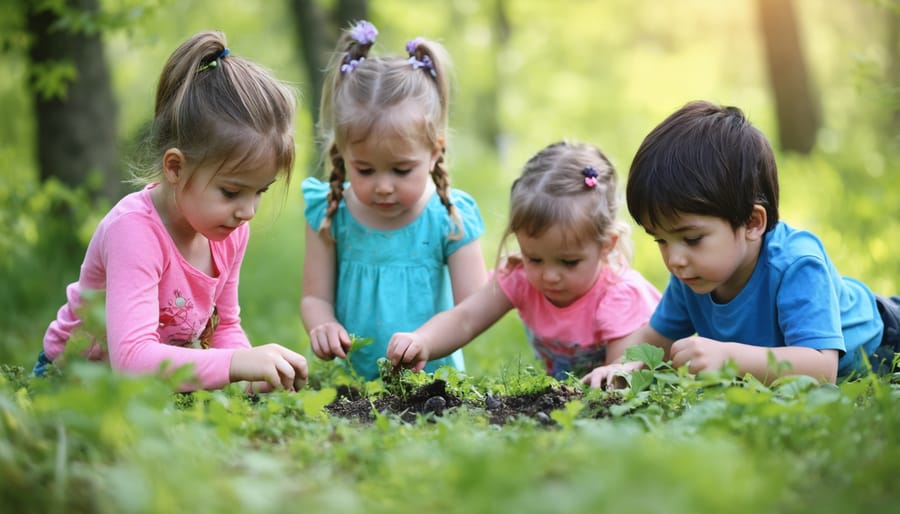
Practical Outdoor Activities for Each Stage
Nature offers a powerful healing environment for children processing difficult emotions. Here’s how you can use outdoor activities to support your child through each stage of their emotional response:
Heroic Stage:
• Create a “helper’s garden” where your child can plant flowers or vegetables for others
• Organize a neighborhood cleanup activity
• Build bird feeders or bug hotels to help local wildlife
• Set up a lemonade stand with proceeds going to disaster relief
Honeymoon Stage:
• Start a gratitude scavenger hunt, finding and photographing things that bring joy
• Make nature art using found objects to express positive feelings
• Create friendship rocks with encouraging messages to share
• Design and maintain a community butterfly garden
Disillusionment Stage:
• Practice “anger throws” with pine cones into a safe area
• Build and decorate a “feelings fort” using natural materials
• Create a quiet nature spot for reflection and journaling
• Go on “emotion walks” where different paths represent different feelings
Reconstruction Stage:
• Design and plant a “recovery garden” that grows over time
• Build obstacle courses to practice overcoming challenges
• Create a nature timeline showing progress and growth
• Make “future dream catchers” using natural materials
Remember to follow your child’s lead and adjust activities based on their comfort level. Some children might need more quiet, contemplative activities, while others benefit from more active engagement. The key is providing a safe, supportive space in nature where they can process their emotions at their own pace.
Always stay nearby and available for conversation, but don’t force discussion. These activities work best when they feel natural and unforced, allowing your child to open up organically while engaging with the healing elements of the outdoor environment.

Creating Safe Spaces in Nature
Creating a safe outdoor space allows children to process disaster-related emotions naturally and comfortably. Research shows that emotional healing through nature can be particularly effective for young minds working through trauma.
Start by choosing a quiet, sheltered area in your backyard or a nearby park. Look for spaces with natural elements like trees, grass, or garden areas that provide both comfort and gentle stimulation. Ensure the area is free from hazards and offers some privacy where children can express themselves freely.
Create designated zones within this space: a quiet corner with cushions for reflection, an active area for movement and releasing energy, and a creative space with natural materials for artistic expression. Consider adding simple elements like wind chimes, bird feeders, or a small water feature to provide calming sensory experiences.
Keep the space consistent and accessible, allowing children to return to it whenever they need emotional support. Remember to respect their pace and choices within this environment, letting them lead their healing journey while maintaining a supportive presence.
Understanding and navigating through the four stages of emotional response to disaster is crucial for helping our children heal. By incorporating outdoor activities into each stage, we create natural opportunities for emotional processing and growth. Remember, every child moves through these stages differently, and nature provides a gentle, accepting space for this journey. Whether it’s finding comfort in a favorite park or expressing feelings through garden activities, the outdoor world offers endless possibilities for emotional healing and family connection.

